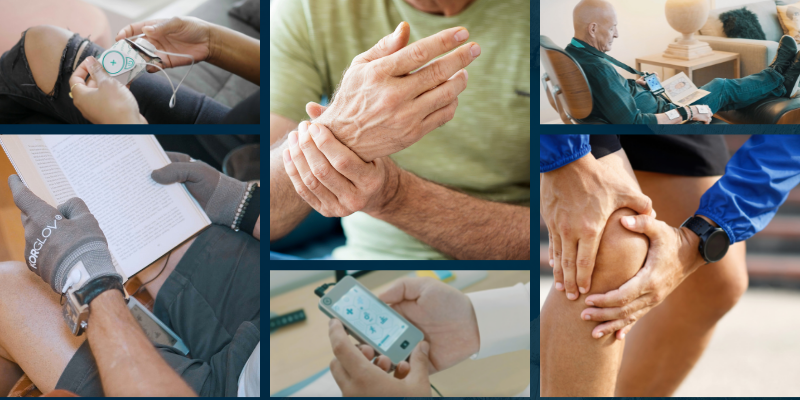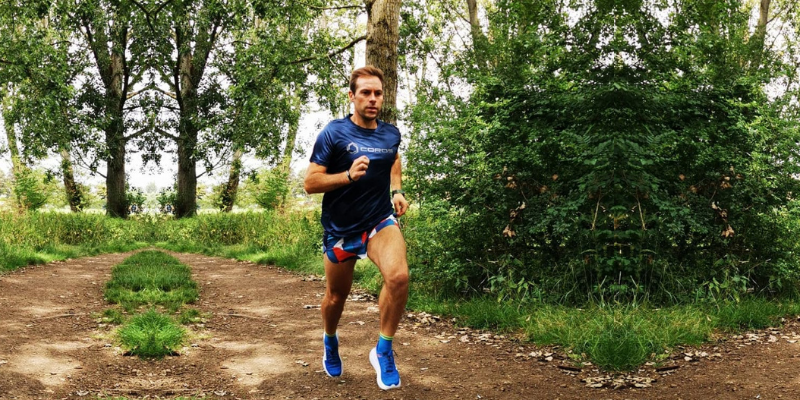Although most people have heard of arthritis, and many people will know someone or have personal experience dealing with ‘arthritis’ pain. It remains very misunderstood.
What is Arthritis?

Arthritis is an informal way of referring to joint pain or joint disease, ‘arthritis’ is not a single disease, it can manifest in many forms. Frequent arthritis symptoms include joint swelling, pain, stiffness and decreased range of motion, with symptoms sometimes severe and debilitating.
According to the Arthritis Foundation, more than 9.2 million people globally have some type of arthritis, with people of all ages, sexes and races being affected. Although for some people symptoms can be mild and may stay the same for years, other people find that their pain can get worse over time, resulting in an inability to do daily activities and in some cases leading to disability.
We look into two common disorders - Rheumatoid Arthritis and Osteoarthritis:

Rheumatoid arthritis
Although arthritis is often associated with aging joints, rheumatoid arthritis is in fact an autoimmune disorder which occurs when your immune system mistakenly attacks your own body’s tissues. It affects the lining of your joints, causing painful swelling and eventually it can result in joint deformity.

Early rheumatoid arthritis tends to affect smaller joints first, particularly finger and toe joints. Then it progresses into wrists, knees, ankles, hips, elbows and shoulders. This is exactly what happened to 35-year-old care company director Chantelle McCabe from Buckingham who was diagnosed with rheumatoid arthritis during her recovery from COVID-19.
She explains: “I’d had a few problems with painful hips, but until I caught COVID-19 I was pretty healthy. Unfortunately, I became really poorly with the virus and was hospitalised. Once I had recovered, I was left in a lot of pain - all over my body.”

“Over the next few months, I had all sorts of tests and eventually they diagnosed me with rheumatoid arthritis. That was a real shock. I was 35, in terrible pain, a single-parent to three children under 18 and I had a demanding job – I didn’t know how I was going to cope.”
Chantelle found that the arthritis was affecting her hands, knees, feet, hips and shoulders, with the pain becoming so bad she could hardly walk, and it would take her an hour to get up each morning. She turned to pain killers, but as a care company director, she knew that taking these was not sustainable or good for her. This is when she stumbled across an alternative pain management option which would change her life.
Discovering NuroKor
Chantelle was at a point with her arthritis pain where she thought she would have to give up her job. But then a holiday to Scotland and a conversation with her aunt, a pharmacist, led to her discovery.

Chantelle explains: “My aunt in Glenrothes had started running pain clinics in her pharmacy and was having a lot of success using a bioelectrical device called NuroKor with her patients. She encouraged me to give it a go.
"I was so defeated by the pain, I didn’t think it would work, but since using it each day, I’ve been able to reduce my medication by 85%.”

Chantelle believes that using NuroKor has made a huge difference to her life, and is grateful she discovered it. She goes on to say: “I am sleeping again, the headaches have gone and my pain is more bearable. I feel more positive about the future and I hope my condition will continue to improve.”
Osteoarthritis
Osteoarthritis is the most common type of arthritis in the UK and occurs when the protective cartilage that cushions the ends of your bones wears down over time. It is commonly diagnosed in older patients and can affect any joint, most frequently affecting joints in your hands, knees, hips and spine.

Symptoms of osteoarthritis include joint pain and stiffness, swelling, tenderness and problems moving the joint. Although the symptoms and pain can be managed, there is no cure for osteoarthritis. For some people, the symptoms can be mild and may come and go. Others will experience more continuous and severe problems which make it difficult to live a normal life.
Staying active and maintaining a healthy weight may slow down the progression, and pain management options can make osteoarthritis more bearable and improve joint function.

Pain management
Shaun Gudge, a strength and conditioning coach who works with residents in care homes for the elderly, also discovered the benefits of NuroKor when looking at ways to treat his patient’s arthritis pain.

He explains:
“When managing pain for osteoarthritis, the benefits of NuroKor are huge, and for many of my patients using the NuroKor for their arthritis has meant reduced pain, more mobility and less need for any opioids (painkillers).”
He goes on to explain which NuroKor devices he uses: “I use different devices depending on where the osteoarthritis is located. The NuroKor mibody is easy to attach and can be a great tool for most joints. The mitouch I use for more chronic pain as it can be adjusted easily and with four pads can have a wider application.

“I also have residents who use the KorGlov to help arthritis pain in their hands. They find it strange to start with, but they see the benefits quickly. One lady in the care home who has arthritis in her hands used the KorGlov, and after a few treatments was able to open her hand more than I have seen her do in the last two years.”

Gudge is a true believer in the therapeutic technologies that bioelectrical therapy offers and continues to use it for his patients who suffer from osteoarthritis. He has helped many of his care home residents, including four men with osteoarthritis in their knees. He reports that after using NuroKor they were able to take less painkillers and walk for a day without pain.
Managing arthritis
For many people arthritis, whether it’s rheumatoid arthritis, osteoarthritis or another form of the disease, can be painful and have a negative impact on their lives. When it comes to managing chronic pain, many people would like an alternative or adjunct therapy to painkillers. This is where bioelectrical therapy can play a key role.
Learn more about the NuroKor mitouch and mibody. Learn more about the NuroKor KorGlov accessory.



